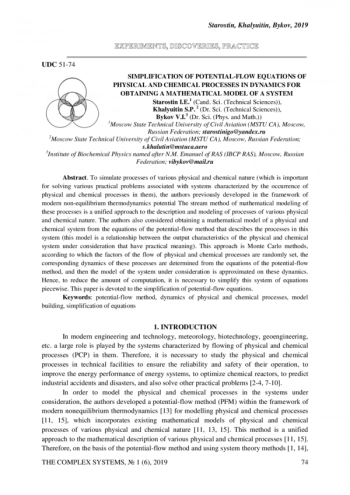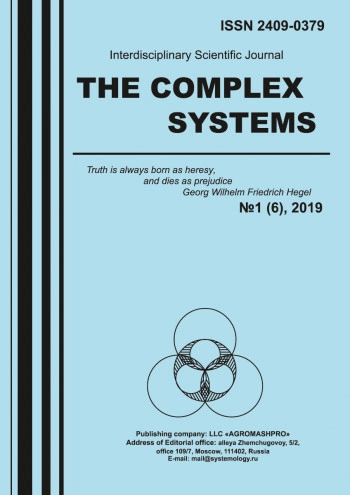To simulate processes of various physical and chemical nature (which is important for solving various practical problems associated with systems characterized by the occurrence of physical and chemical processes in them), the authors previously developed in the framework of modern non-equilibrium thermodynamics potential The stream method of mathematical modeling of these processes is a unified approach to the description and modeling of processes of various physical and chemical nature. The authors also considered obtaining a mathematical model of a physical and chemical system from the equations of the potential-flow method that describes the processes in this system (this model is a relationship between the output characteristics of the physical and chemical system under consideration that have practical meaning). This approach is Monte Carlo methods, according to which the factors of the flow of physical and chemical processes are randomly set, the corresponding dynamics of these processes are determined from the equations of the potential-flow method, and then the model of the system under consideration is approximated on these dynamics. Hence, to reduce the amount of computation, it is necessary to simplify this system of equations piecewise. This paper is devoted to the simplification of potential-flow equations.
Сайт https://scinetwork.ru (далее – сайт) работает по принципу агрегатора – собирает и структурирует информацию из публичных источников в сети Интернет, то есть передает полнотекстовую информацию о товарных знаках в том виде, в котором она содержится в открытом доступе.
Сайт и администрация сайта не используют отображаемые на сайте товарные знаки в коммерческих и рекламных целях, не декларируют своего участия в процессе их государственной регистрации, не заявляют о своих исключительных правах на товарные знаки, а также не гарантируют точность, полноту и достоверность информации.
Все права на товарные знаки принадлежат их законным владельцам!
Сайт носит исключительно информационный характер, и предоставляемые им сведения являются открытыми публичными данными.
Администрация сайта не несет ответственность за какие бы то ни было убытки, возникающие в результате доступа и использования сайта.
Спасибо, понятно.




